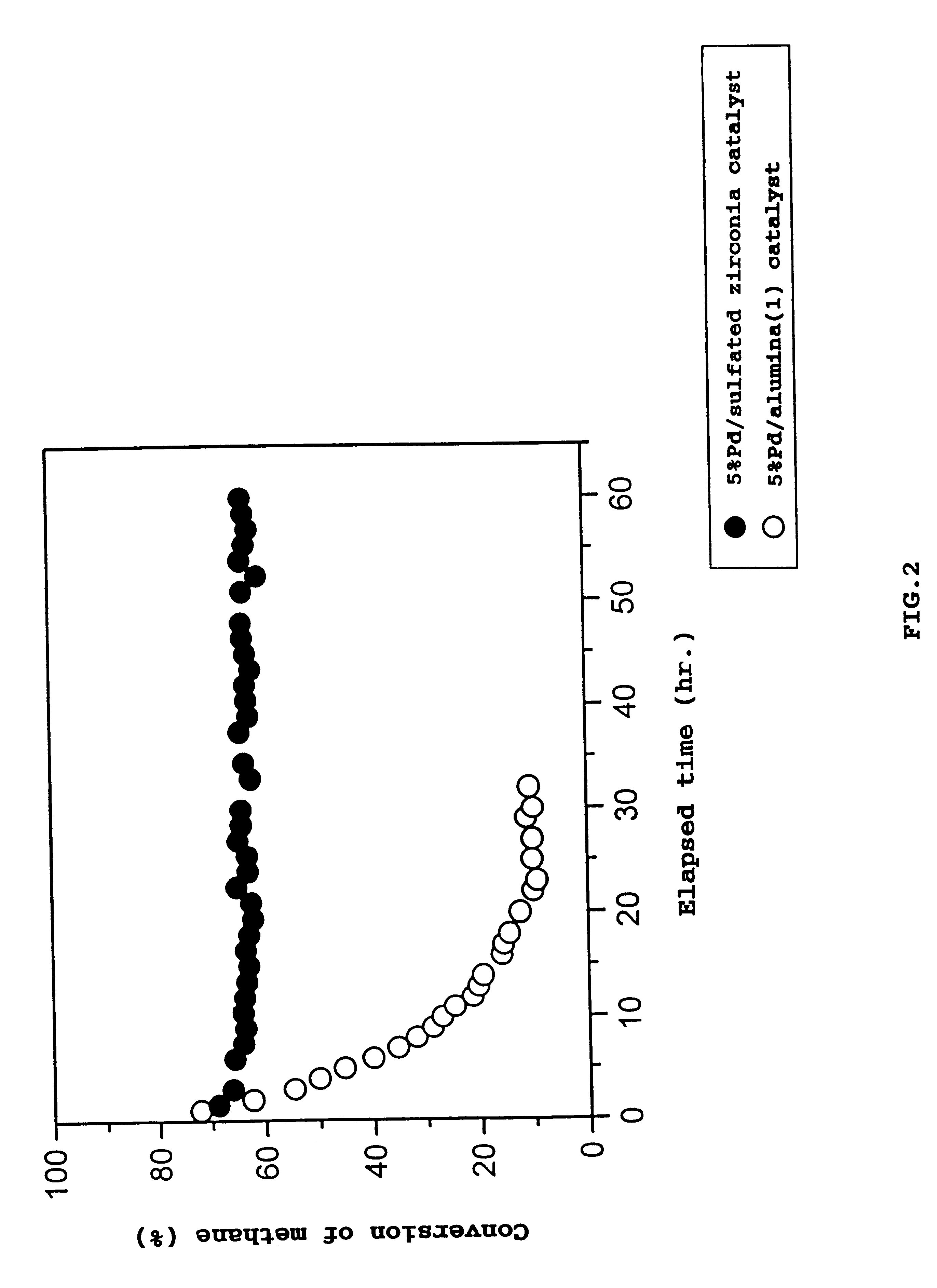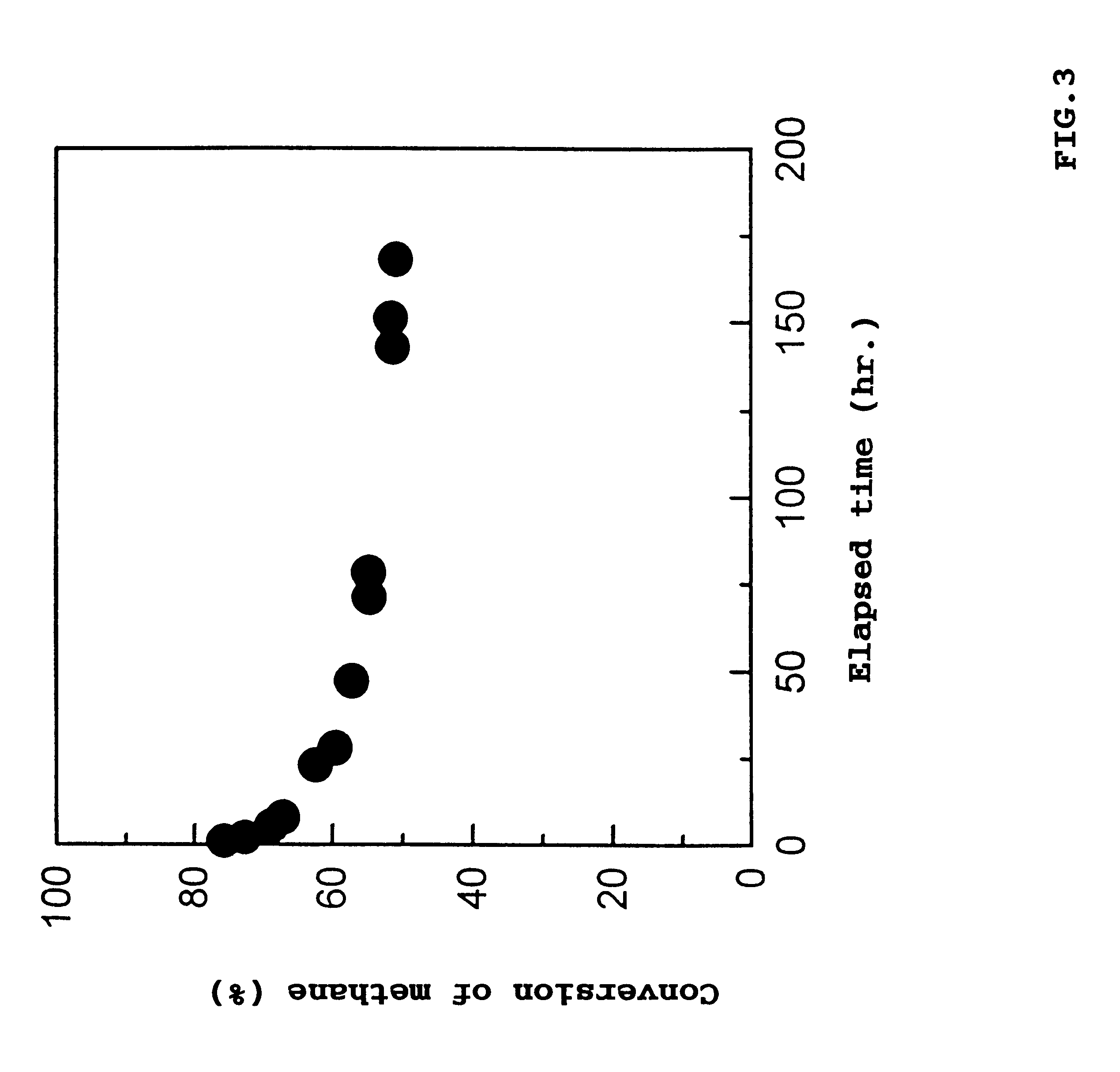Catalyst for removing hydrocarbons from exhaust gas and method for clarification of exhaust gas
a hydrocarbon removal and catalyst technology, applied in physical/chemical process catalysts, metal/metal-oxide/metal-hydroxide catalysts, separation processes, etc., can solve the problem of unavoidable time-dependent degradation of catalytic activity, low methane removal efficiency, and inability to produce sufficient purifying effects of catalysts on exhaust gas. , to achieve the effect of high methane oxidation activity, stable long-term high purification effect, and resistance to catalyst activity
- Summary
- Abstract
- Description
- Claims
- Application Information
AI Technical Summary
Benefits of technology
Problems solved by technology
Method used
Image
Examples
example 2
Preparation of 5%Pd / zirconia Catalyst
A 5 g quantity of the same zirconia as used in Example 1 was immersed in 20 ml of palladium nitrate aqueous solution containing 0.25 g of palladium at 0.degree. C. for 15 hours and dried, followed by calcining in air at 550.degree. C. for 2 hours, giving a 5%Pd / zirconia catalyst.
example 3
Preparation of 10%Pd / zirconia Catalyst
A 5 g quantity of the same zirconia as used in Example 1 was immersed in 20 ml of palladium nitrate aqueous solution containing 0.50 g of palladium at 0.degree. C. for 15 hours and dried, followed by calcining in air at 550.degree. C. for 2 hours, giving a 10%Pd / zirconia catalyst.
example 4
Preparation of 20%Pd / zirconia Catalyst
A 5 g quantity of the same zirconia as used in Example 1 was immersed in 20 ml of palladium nitrate aqueous solution containing 1.0 g of palladium at 0.degree. C. for 15 hours and dried, followed by calcining in air at 550.degree. C. for 2 hours, giving a 20%Pd / zirconia catalyst.
PUM
| Property | Measurement | Unit |
|---|---|---|
| temperature | aaaaa | aaaaa |
| concentration | aaaaa | aaaaa |
| concentration | aaaaa | aaaaa |
Abstract
Description
Claims
Application Information
 Login to View More
Login to View More - R&D
- Intellectual Property
- Life Sciences
- Materials
- Tech Scout
- Unparalleled Data Quality
- Higher Quality Content
- 60% Fewer Hallucinations
Browse by: Latest US Patents, China's latest patents, Technical Efficacy Thesaurus, Application Domain, Technology Topic, Popular Technical Reports.
© 2025 PatSnap. All rights reserved.Legal|Privacy policy|Modern Slavery Act Transparency Statement|Sitemap|About US| Contact US: help@patsnap.com



